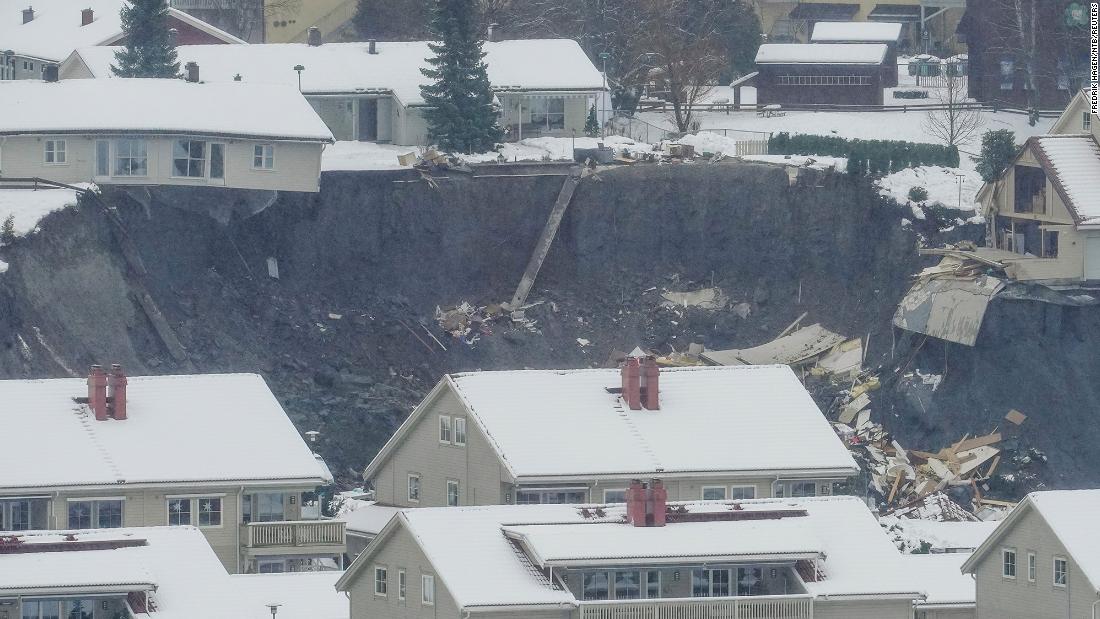The epicenter was reported below the Pacific Ocean floor, however; no tsunami alert was issued. More than 900 people were evacuated from the area, police said.
Police said rescue workers continued to search the area for children and adults who feared they were trapped in the mud and debris.
“We know for sure that there are people in the affected area, but we do not know if there are 11 people or if the number is small,” police spokesman Roger Peterson told a news conference.
“We are still looking for survivors,” he said.
Photos of the site showed a large abyss with destroyed buildings at its base. Other buildings hung on the edges of the abyss, and TV footage was shown. Broadcaster NRK reported that two more houses collapsed into the abyss on Wednesday afternoon.
King Harold of Norway said the landslide had a profound effect on him.
“My thoughts are with everyone who has been affected, injured or lost their homes, and now there are those who live in complete fear of disaster and uncertainty,” the 83-year-old King said in a statement. Palace.
Helicopters continued to hover over the area as night fell, sometimes lowering emergency responders toward the rubble of collapsed houses.
“People may be stuck … but at the same time we can’t be sure, because this is the New Year’s holiday, which means people might be elsewhere,” Prime Minister Erna Solberg told reporters after visiting the venue.
The locals talked about their experience.
“Two major earthquakes lasted a long time and I thought it was snow removal or something like that,” said 68-year-old Oystein Geztrum, NRK.
“Then the power went out suddenly and came to the door next door and told us we had to leave, so I woke up my three grandchildren and told them to get dressed quickly.”
The masses of the earth, one of the largest clay slides in recent Norwegian history, are still moving, Doril Hofschagen, regional head of the Norwegian Directorate of Water and Energy, told a news conference.





